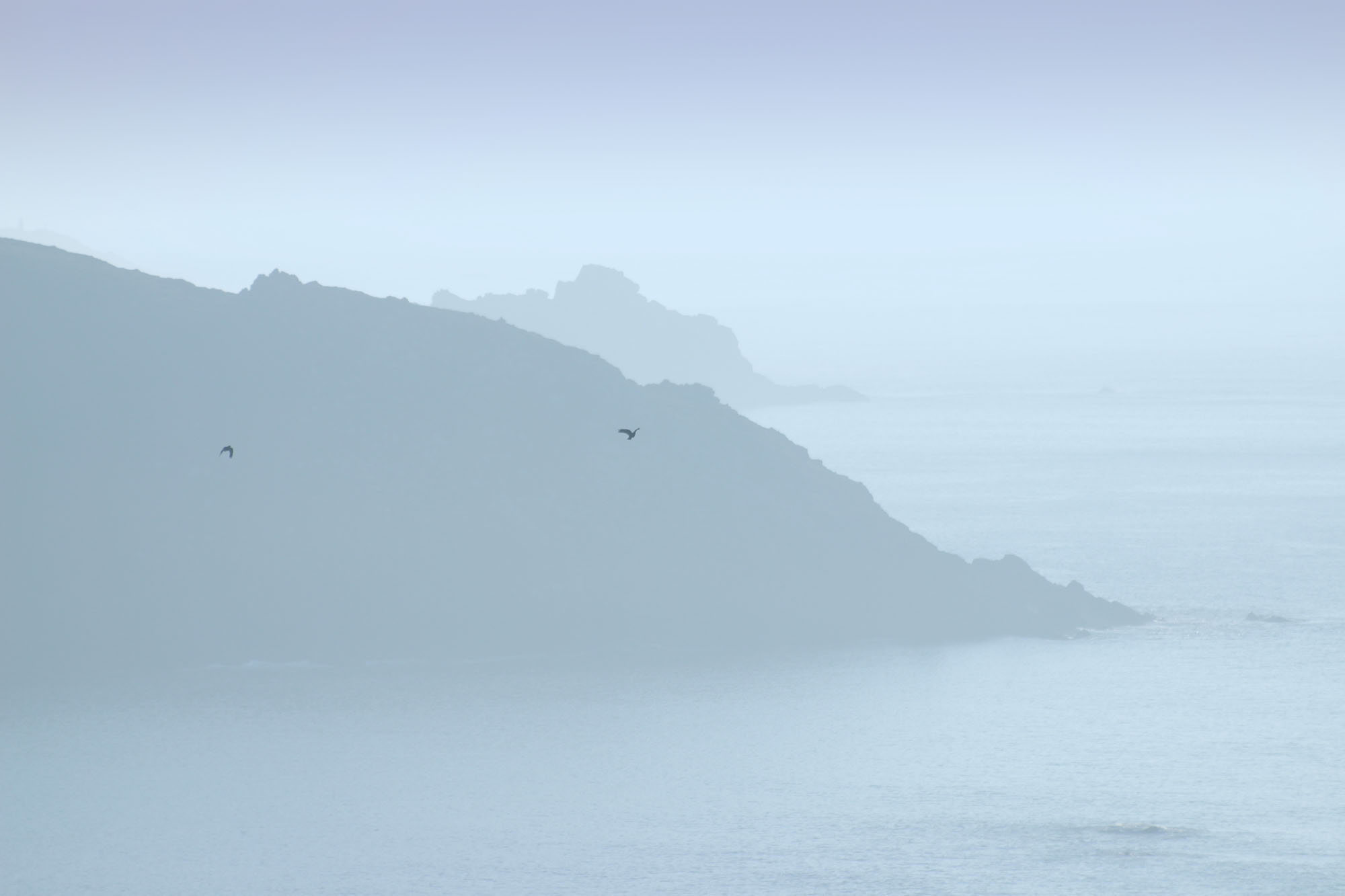We (Ali and myself, plus sister Elaine), were a bit late with our Jersey migration this year – but have just returned from a splendid few days catching up with the choughs, sheep, and release team on the island.
The six birds sent from Paradise Park had just completed their quarantine, and were eager to get out on the cliffs with the rest of the flock. They were released on Monday 3rd October – we got there on the evening of the 4th.
We were very lucky with the weather, and although we stayed dry, the wind was showing signs of impending winter. We soon got to the cliffs and met up with Liz Corry and team – and, of course, the choughs. The birds are being closely monitored, and all the newly released ones have been fitted with radio transmitters. The aerials could be seen through binoculars and it was clear that all the birds were mixing together well.
The chough is renowned for its incredible flying ability, and the Jersey flock is no exception. The older birds have truly mastered their environment, and the youngsters are picking up the same skills at a phenomenal rate – in fact the new and established birds could only be told apart by their transmitters (or lack of). The birds like nothing more than to dance on the updrafts, and ride the thermals. “Like black handkerchiefs blown by the wind” as Elaine said.
The flock of birds can relocate themselves remarkably quickly – one moment they are all feeding close to the aviary – and the next they are several hundred feet up in the air…
…and if you have a telephoto lens, they look like this.
We didn’t actually get to see all thirty-five choughs at the same time, although we are sure we encountered them all during our stay. We found out that the “teenagers” (as Liz calls the year-old birds) have decided to go exploring – much the same as last year.
They have been seen several kilometres away on Jersey’s racecourse on the north-west tip of the island. They may be scouting for possible nest sites, or they may have found a new food supply. (There is a small herd of cows in a field in the centre of the course – ideal for trampled grass and cow-pats).
The Bracken Bashers
One of the aims of the Birds on the Edge project is to restore the coastal habitat around the island of Jersey, and as such they use a variety of methods. These include volunteer teams cutting gorse down, and bashing down encroaching bracken with tractors.
There is another dedicated team who are out in all weathers doing their bit for conservation. These are the Manx Loaghtan sheep (Manx Longhorns), and they are doing an impressive job. They have increased their flock even quicker than the choughs, there are now in the region of 200 sheep.
I was lucky enough to have a close encounter with one of the ladies on the cliffs while chough watching – it’s almost like she’s guarding them.
Keep up the good work Sharon – and everyone else!
The usual thorough monthly report from the Birds on the Edge team for September is here.






